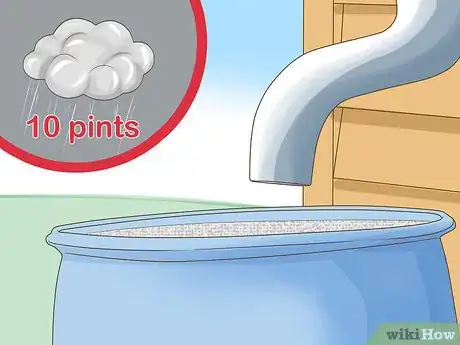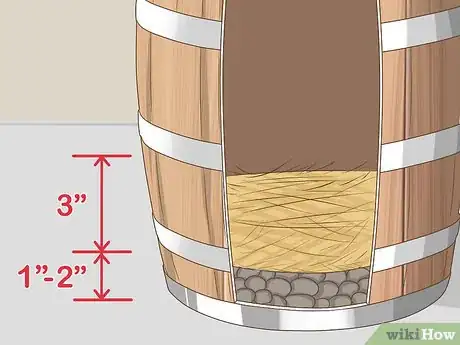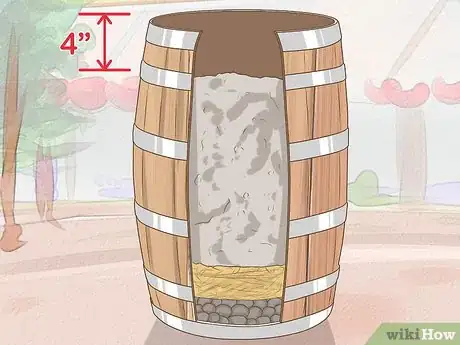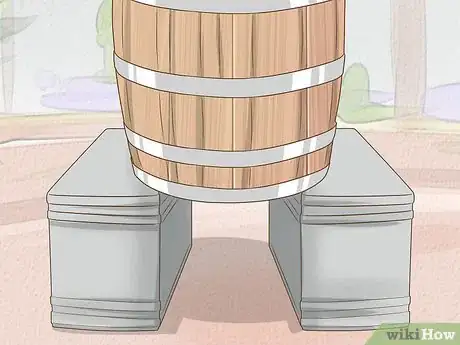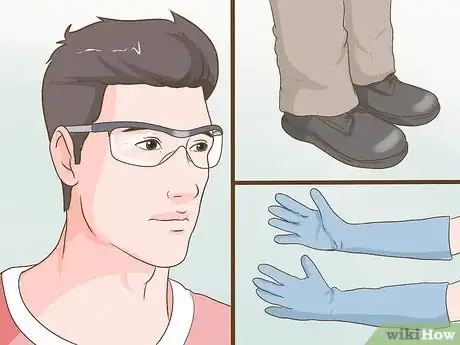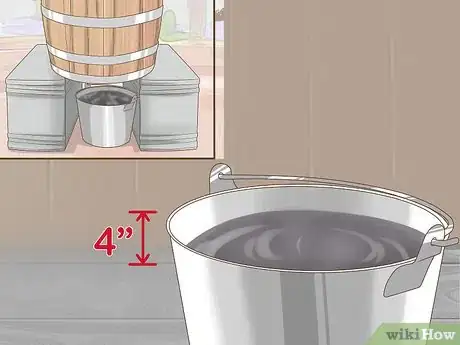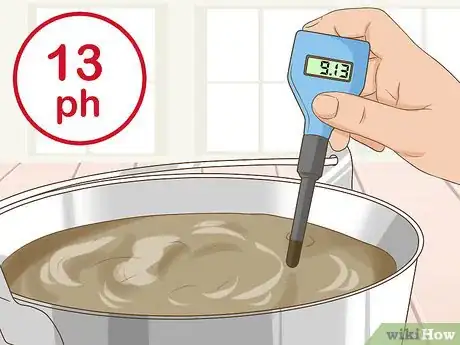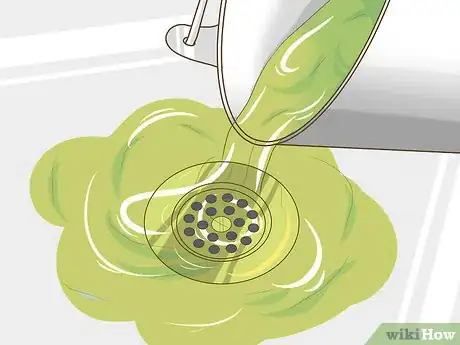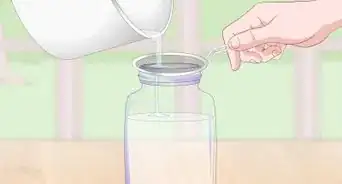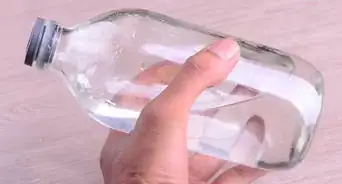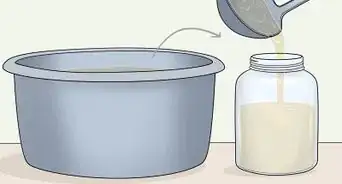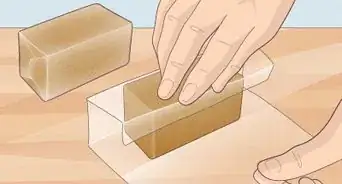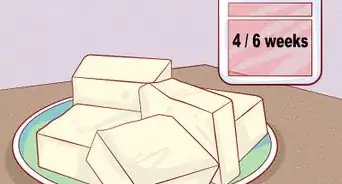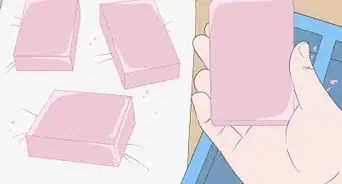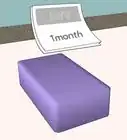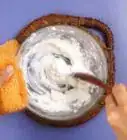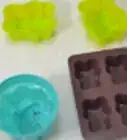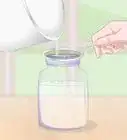This article was co-authored by wikiHow Staff. Our trained team of editors and researchers validate articles for accuracy and comprehensiveness. wikiHow's Content Management Team carefully monitors the work from our editorial staff to ensure that each article is backed by trusted research and meets our high quality standards.
wikiHow marks an article as reader-approved once it receives enough positive feedback. This article received 15 testimonials and 92% of readers who voted found it helpful, earning it our reader-approved status.
This article has been viewed 1,178,054 times.
Learn more...
Lye is an alkaline solution that’s often used for washing, making soaps, and curing certain foods. Lye is sometimes called caustic soda because it has a pH of about 13, which means it’s extremely alkaline and can burn and corrode skin, organic tissue, certain plastics, and other materials. You can make your own potassium hydroxide lye by soaking wood ash in rain water, and this type of lye is ideal for making liquid soaps. Working with lye is dangerous, and requires a number of safety precautions.
Steps
Organizing Your Supplies
-
1Collect wood ashes. To make potassium hydroxide lye, you need the white ashes from hardwood fires. When hardwood trees are growing, they draw potassium from the ground. This potassium doesn’t burn in the fire, and is still present in the ashes after the fire. You can then leach the potassium from the ashes with water.[1]
- After every hardwood fire you have, allow the ashes to cool for a few days. Then collect the white ashes and store them in metal containers.
- The best hardwoods for lye water include ash, hickory, beech, sugar maple, and buckeye.[2]
- To make lye using this method, you'll need enough ash to nearly fill a wooden barrel.
- Don’t use ashes from softwood trees, as these don’t contain enough potassium.
-
2Collect rainwater. The second thing you need to make liquid potassium hydroxide lye is soft water. Rainwater is ideal because it’s soft and available in large quantities.
- Set up a rain barrel in your backyard or under the eaves of your house to collect rainwater. Make sure there's a filter on the barrel to strain out leaves and organic debris.
- Soft water has lower concentrations of other elements, so it’s ideal for soap making. Hard water will produce soap that doesn’t lather.
- You'll need at least 10 pints (4.7 L) of soft water to make lye water.
Advertisement -
3Drill holes in your wooden barrel. After you fill your barrel with ashes, you'll run water through the ashes to leach the potassium. The water needs somewhere to drain out of, so you need to make holes. With a drill and a small drill bit, drill about six small holes into the bottom of the barrel.
- Concentrate the holes near the center of the barrel so the water will drain into a bucket.
-
4Add a layer of stones and straw. Fill the bottom of the barrel with 1 to 2 inches (2.5 to 5 cm) of clean stones and pebbles. The pebbles should be large enough that they don’t fall through the holes in the bottom. Cover the stones with at least 3 inches (7.6 cm) of dried straw.
- The straw and stones will act as a filter. The lye water will drain down through the straw and stones, leaving the ashes and particles on top.
Making Lye Water
-
1Fill the barrel with wood ash. Transfer the wood ash you’ve collected in your metal buckets to the barrel. Shovel the wood ash over top of the straw. Fill the barrel to within 4 inches (10 cm) of the top of the barrel.
-
2Prop the barrel up on sturdy blocks. Mount the barrel on sturdy blocks so the holes underneath are accessible. The barrel has to be high enough off the ground to accommodate a bucket underneath.
- You can also mount the barrel inside an open wooden frame.
- Make sure the barrel is sturdy and will not fall over.
-
3Position the bucket. Place a lye-safe bucket under the holes in the barrel. This bucket will catch the lye water, so it has to be a lye-safe material. Acceptable bucket materials include:[3]
- Glass
- Stainless steel
- Number 5 plastics
- Heavy-duty plastic
-
4Pour rainwater over the ash. Slowly add rainwater to the barrel by the bucketful. You want to add enough water in total to make the ashes wet, but not soaking. If you start to see the water line at the top of the bucket and the ashes are starting to float, stop adding water.[4]
- Pay attention to how many bucketfuls of water you add. This will give you an idea of how many buckets of lye water to expect from the barrel.
- You don’t have to put a lid on the barrel, but make sure that it’s protected from rain in case you get a storm.
-
5Put on your personal safety equipment. Lye is very caustic and corrosive. It burns skin, causes blindness, and can damage organic tissue and inorganic materials. When working with lye and lye water, it’s very important to be extremely careful and to wear personal safety equipment, including:
- Goggles
- Hard shoes or boots
- Elbow-length plastic gloves
-
6Collect the water that drains out. After a few hours, the first run of lye water will start to trickle out from the holes in the bottom of the barrel. Let the bucket underneath fill up to within 4 inches (10 cm) of the top of the bucket. When the bucket is full, carefully remove it from under the barrel. Be careful not to spill the lye water.
- Replace the bucket with a fresh one to catch the rest of the water.
-
7Test the strength. Your lye water has to be a certain strength before you can use it to make soap. The lye water will probably not be ready after a single run, but you can test it. There are four different tests you can use to test the strength of the lye:[5]
- Use pH test strips. You're looking for a pH of 13.
- Use a pH meter to see if the pH is at 13.
- Place a small potato in the lye water. If it sinks, the lye isn't strong enough. If it floats, the lye is ready.
- Dip a chicken feather into the lye. If the feather doesn’t dissolve, the lye isn't strong enough yet.
-
8Run the water through again until it’s strong enough. Most lye water solutions will have to be run through the ash barrel at least a second time. If your lye wasn’t strong enough after the first run, carefully pour all the lye water back into the ash barrel. Be extremely careful not to spill or splash the lye water, as it can burn your skin.
- Replace a bucket under the holes in the barrel.
- Let the water drain through the ashes again.
- The lye water that comes out the second time will be stronger.
- When all the lye water has drained through a second time, test the pH again.
- Run the lye water through again if necessary.
Using Lye Water
-
1Make liquid soap. Homemade lye water made from potassium hydroxide is ideal for making liquid soaps. You can also make your own castile soap, which uses a lot of fat to make a moisturizing soap.
- Potassium hydroxide lye is not ideal for making hard bar soaps. To make these types of soaps, use sodium hydroxide, which you can buy from home improvement stores, farm supplies, and online.
-
2Cure Olives. There are several foods, such as olives and lutefisk, that are traditionally cured with lye. You can use your homemade lye water to cure olives and other foods at home.
-
3Unclog drains. Because lye is so caustic and eats organic materials like skin and hair, it has long been used as a household cleaner and drain cleaner. You can use your lye water to unclog drains in the laundry or utility room, clean bathtub drains, and unclog sink drains.
Community Q&A
-
QuestionCan I use coal instead of wooden ashes?
 Community AnswerNo, you cannot use coal. Coal is pure carbon, and will not work the same way as wooden ashes will.
Community AnswerNo, you cannot use coal. Coal is pure carbon, and will not work the same way as wooden ashes will. -
QuestionDo I have to use a wooden barrel?
 Community AnswerNo, but a wooden barrel will be the best choice. If you must use another material, make sure that it isn't aluminum, as this will react negatively with the lye.
Community AnswerNo, but a wooden barrel will be the best choice. If you must use another material, make sure that it isn't aluminum, as this will react negatively with the lye. -
QuestionWe are on a remote copra plantation. Can I use the ash from fallen (dried brown) coconut palm fronds and coconut shell that is discarded after the copra is extracted to make my lye?
 Community AnswerThe coconut fronds are a good source of potassium. Coconut shells should also yield potassium. Using these as a potash source would yield KOH, potassium hydroxide. It is a substitute for NaOH, sodium hydroxide.
Community AnswerThe coconut fronds are a good source of potassium. Coconut shells should also yield potassium. Using these as a potash source would yield KOH, potassium hydroxide. It is a substitute for NaOH, sodium hydroxide.
Thing You'll Need
- Hardwood ash
- Metal container
- Rain barrel
- Wooden barrel
- Drill
- Straw
- Stones and pebbles
- Blocks
- Lye-safe buckets
- Long rubber gloves
- Safety goggles
- Hard shoes
References
- ↑ https://www.youtube.com/watch?v=MsfskVr_raY
- ↑ http://www.countryfarm-lifestyles.com/make-lye.html#.WJs49X9vtf0
- ↑ http://www.lovinsoap.com/2015/12/how-to-pick-containers-for-making-soap/
- ↑ http://www.countryfarm-lifestyles.com/make-lye.html#.WJs49X9vtf0
- ↑ http://www.countryfarm-lifestyles.com/make-lye.html#.WJs49X9vtf0
About This Article
To make lye water, drill 6 small holes in the base of a barrel and place a 1-2 inch layer of stones on the bottom of the barrel. Add a 3 inch layer of straw on top of the stones and fill the remainder of the barrel with wood ash. Prop the barrel up on sturdy blocks so you can place a bucket underneath and slowly pour rainwater over the ash. After a few hours, lye water will trickle out from the holes into the bucket. To learn how to test the strength of your lye water, keep reading!

